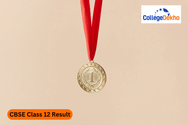
Never Miss an Exam Update
Prepare thoroughly with the most important questions of CBSE Class 12th Chemistry Chapter 8 - Aldehydes, Ketones and Carboxylic Acids. You can first cover the CBSE Class 12th Chemistry syllabus to understand the key topics and then start solving the CBSE Class 12th Chemistry Chapter 8 - Aldehydes, Ketones and Carboxylic Acids Important Question to get a better understanding of your preparation level. Start practicing now.
Was this article helpful?








































